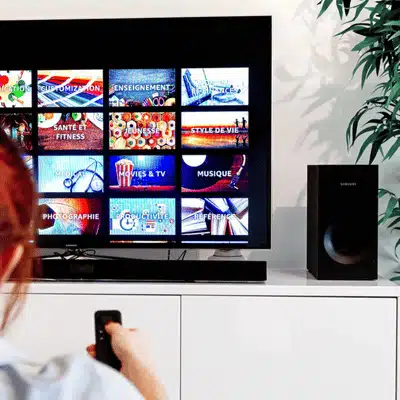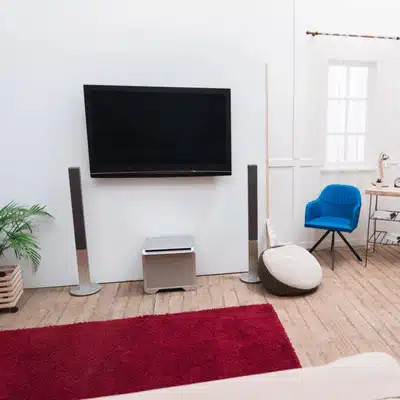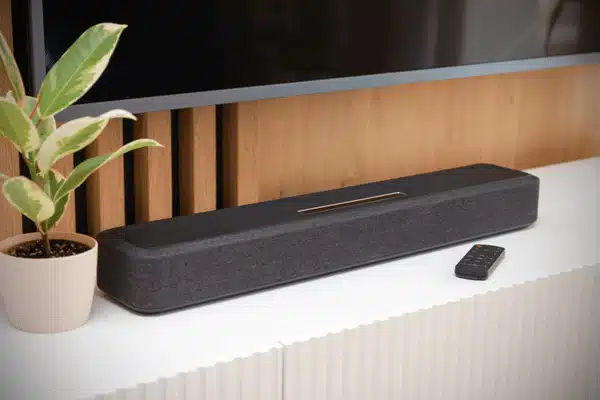When planning your home audio setup, you’ll face a key decision: wired or wireless speakers. Both can deliver great sound, but they work very different ways. Your choice depends on what matters most to you.
Sound Quality: The Core Difference

Wired speakers win most sound quality comparison tests. They get audio signals directly through cables with no compression or loss. This means better audio fidelity and more accurate frequency response. You’ll hear every detail exactly as it was recorded.
Wireless speakers have improved with modern wireless technology. Advanced audio codecs now deliver near-perfect sound. Many Wi-Fi models support high-quality audio formats up to 24-bit/96kHz. Still, they can’t quite match the best wired setups in sound quality comparison studies.
The difference is small for casual listening. But if you want the absolute best bass performance and surround sound quality, wired speakers still lead.
Latency and Signal Issues
Latency matters more than you might think. Wired speakers have almost zero latency – sound travels at the speed of electricity. This makes them perfect for home theater systems where timing is critical.
Wireless speakers add small delays, especially over Bluetooth. You might notice lip-sync issues in movies or slight echoes with multiple speakers. Wi-Fi connections handle latency better but still can’t match wired performance. Even small latency differences affect stereo playback quality.
Signal transmission also differs greatly. Wired speakers never drop out unless cables break. Wireless speakers face interference from other devices, Wi-Fi networks, and even walls. Signal dropouts can interrupt your music at the worst times. This interference gets worse in crowded wireless environments with multiple devices competing for bandwidth. Network interference and electrical interference both impact wireless performance in ways that never affect wired systems.
Installation and Setup

The setup process shows the biggest gap between these options.
Wired installation takes serious work. You’ll run cables through walls, under floors, or along baseboards. Professional installation often makes sense, especially for multi-room audio systems. Cable management becomes critical – messy wires look terrible and create safety hazards. A second installation might be needed if you want to expand later.
Wireless setup is much simpler. Place the speaker where you want it, plug into power, and connect to your network through an app. No drilling, no cable runs, no wall damage. This flexibility appeals to renters and anyone avoiding major home changes. A third installation option combines both approaches for maximum flexibility.
Placement and Design Freedom
Wireless speakers offer amazing placement options. Move them anywhere within Wi-Fi range. Take them outside for parties. Rearrange your room without rewiring. This portability transforms how you use audio in your home. The mobility lets you optimize room acoustics by testing different positions. The flexibility to experiment with speaker placement helps you find the best sound for your space.
Wired speakers stay put once installed. But skilled installers can put them exactly where acoustics work best. In-wall and ceiling speakers nearly disappear, creating clean aesthetics that wireless speakers can’t match. Proper design planning ensures optimal placement from the start.
Both approaches can look great with proper design. Wireless speakers avoid cable clutter but need power outlets. Wired speakers can hide completely in walls and ceilings for better aesthetics overall. The flexibility of wireless systems lets you change your room layout without rewiring, while wired systems offer more permanent design solutions.
Power and Connectivity
Amplification works differently in each system. Wired speakers connect to separate amplifiers or receivers. This lets you choose powerful, high-quality amps that match your needs. External amplification often delivers better performance than built-in options. Professional amplification systems can drive multiple speakers with consistent power.
Wireless speakers include built-in amplifiers. Each speaker needs its own power source. Battery-powered models offer true wireless freedom but create power source disadvantages. You’ll deal with battery life limits and charging schedules. Some speakers won’t play while charging, limiting portability during use.
Connectivity options vary widely. Wired speakers work with any audio source through your amplifier. Wireless speakers depend on Bluetooth connectivity, Wi-Fi, or other protocols. Check compatibility with your devices and streaming services before buying. Different audio formats may not work with all wireless speakers, while wired systems handle any audio formats your amplifier supports.
Modern wireless speakers often include convenience features like voice control and smart home integration. They connect directly to streaming services without needing your phone as a middleman. However, compatibility issues can arise between different brands and systems.
Money Matters and Maintenance

Cost considerations favor wired speakers for pure performance per dollar. You’ll find excellent wired speakers at multiple price points. Since they lack built-in electronics, more of your money goes toward driver technology and sound quality. Budget-friendly price points offer better value in wired options.
Wireless speakers cost more upfront due to built-in wireless technology and amplifiers. But remember – wired systems need separate amplifiers, which adds to total cost.
Maintenance differs between systems. Wired speakers need little care once installed. Wireless speakers require software updates, battery replacement, and network troubleshooting. When troubleshooting problems, wireless systems involve more variables than simple wired connections.
For multi-room setups, wireless speakers can actually cost less. No professional installation or cable runs means lower total expenses.
Durability and Upgrades
Durability strongly favors wired speakers. Simple passive speakers last decades with minimal care. Their durability comes from fewer electronic components. No batteries to replace, no wireless chips to fail, no software to update. Build quality matters less when there are fewer parts to break.
Wireless speakers contain more parts that affect durability. Batteries wear out after a few years. Wireless standards change, potentially making older speakers obsolete. However, build quality has improved greatly, and many wireless speakers now offer good durability for years of use. The durability of wireless technology continues improving as manufacturers focus on longevity.
Longevity depends on your needs. Wired speakers work with any future audio system thanks to universal connections. Wireless speakers may need replacement when technology advances, affecting their longevity.
Upgrades work differently too. Wired systems let you improve components separately. Wireless speakers need complete replacement for major improvements.
Range and Interference Challenges
Wireless speakers face range limitations that wired systems avoid. Bluetooth speakers typically work within 30 feet, while Wi-Fi speakers depend on your network coverage. Wi-Fi interference from other devices can disrupt playback, especially in dense wireless environments.
Physical obstacles like walls reduce wireless range and increase interference. Multiple wireless devices competing for bandwidth create more interference problems. Wired speakers never face these issues.
The Audio Experience and Customization
Your overall audio experience depends on many factors. Wired systems excel at consistent performance and maximum fidelity. Wireless systems offer better user experience through convenience and modern features.
Customization options favor wired systems during installation but wireless systems for daily use. The flexibility to move speakers and try new positions appeals to many users.
Making Your Choice

Choose wired speakers if you want the best possible sound quality, rock-solid reliability, long-term durability, custom installation with hidden wires, or home theater systems with perfect timing.
Choose wireless speakers if you value easy setup and flexibility, clean aesthetics without cable management, smart home integration, portability between rooms and outdoors, or simple maintenance.
Many people use both approaches. Install wired speakers in main listening rooms for best performance. Add wireless speakers in bedrooms, kitchens, and outdoor areas for flexibility.
Consider your lifestyle, budget, and how you actually listen to music. Both options deliver excellent audio experiences when matched to your needs.
Take Action on Your Audio Setup
Stop settling for poor sound in your home. Whether you choose wired or wireless, the right speaker system will transform how you enjoy music and movies.
Ready to upgrade your home audio? Contact our installation experts today for a free consultation. We’ll assess your space, discuss your needs, and design the perfect system for your lifestyle. Don’t wait – great sound is just one call away.
Your ears deserve better. Let’s make it happen.

